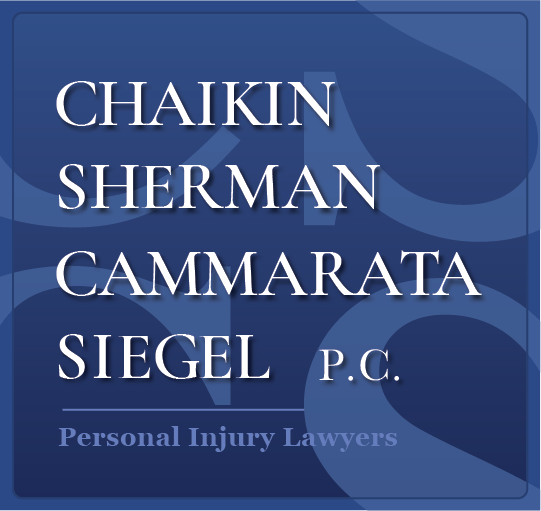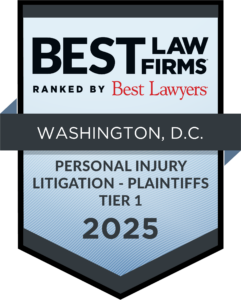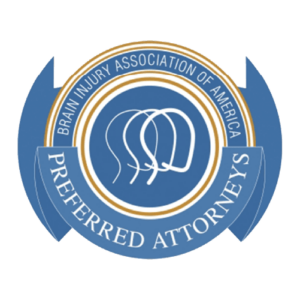A new school year is an exciting time, and while new teachers, courses, and classmates may offer plenty of reason to feel happy about the year ahead, there are as many reasons for students and parents to be concerned about safety.
From a practical perspective, schools are filled with an array of potential hazards parents can’t always control – whether it’s motor vehicle traffic during congested pick-up and drop-off times, preventable dangers left unaddressed, or the proclivity of children and adolescents to find themselves in harm’s way. For anyone with a young student on their hands, that’s all the more reason to make safety a priority.
As parents ourselves, our team at https://www.chaikinandsherman.com/wp-content/uploads/2023/05/iStock-912151500-scaled-1.jpg wants to ensure every student starts and finishes the school year safely. As attorneys who focus on matters of personal injury and preventable accidents, we know the numbers mean that may not always be the case.
School Safety Tips
To help prevent what can be serious injuries and lasting repercussions for our young ones, we’re providing a few helpful tips students, parents, and motorists should all be mindful off as the new school year begins – whether it relates to safety at school, on nearby local roads, or the sports field.
Concussions & Brain Injuries at School
As some of the most unpredictable physical injuries, traumatic brain injuries (TBI) are a concern for people of any age, and especially young children who are still developing their cognitive abilities. As the Brain Injury Association of America notes, almost half a million kids are treated in ER departments for concussions and brain injuries every year – that’s over 5,000 of the largest school buses filled to capacity.
With statistics like these, it’s critical to know where risks exist, and what parents, faculty, and students can do to manage them.
- Sports-related brain injuries – Traumatic brain injuries, most commonly concussions (or mild TBI), have become a significant concern in youth sports programs. Today, medical experts agree about the risks of youth concussions, as well as the long-term dangers associated with repeat head injuries. It’s why many municipalities, states, and school districts have enacted laws similar to legislation drafted by https://www.chaikinandsherman.com/wp-content/uploads/2023/05/iStock-912151500-scaled-1.jpg Partner Joseph Cammarata (the DC Youth Athletic Concussion Protection Act, enacted in 2011), which requires all youth programs in DC to immediately remove young athletes with suspected head injuries from practice or play, and ensure they’re properly evaluated before they return. As parents, coaches, or concerned parties, you can follow these types of precautions yourself by closely watching for signs of concussions in young players, removing them from play following a brain injury, getting them checked out by a medical professional, and talking to your athlete about concussions and why they should report symptoms to coaches and adults right away. If schools aren’t following protocol outlined by sports concussion laws in your state, you should bring it to the attention of administrators. Choosing the right gear (i.e. the proper-fitting, well-maintained, and sport-appropriate helmets) and teaching techniques for protecting the head can also help prevent concussions.
- Non-sports concussion risks – According to a recently published study, sports like football, basketball, and wrestling (although a common cause of child concussions) aren’t the only risks children face when it comes to brain injuries; consumer products and household structures are top child brain injury causes too. That includes things like stairs, bicycles, car and booster seats, and playgrounds. Helping your child stay safe means ensuring use of proper helmets, properly installing age- and size-appropriate car / booster seats, choosing playgrounds with soft materials,, and that child bicyclists understand safe riding techniques.
- Know the warning signs – Whether your child is a cheerleader, football star, or a student who simply goes to school, it’s important as a parent to spot signs of a possible concussion. Common signs and symptoms include a dazed or stunned appearance, changes in mood or behavior, clumsy movements or balance difficulties, headaches, nausea or vomiting, light sensitivity, confusion, and fatigue. Signs of more serious problems, such as a dangerous collection of blood (hematoma) include slurred speech, repeated vomiting or convulsions, loss of consciousness, and drowsiness or an inability to wake up. Experts recommend talking with your child to help them understand possible concussion signs, and how and when to report them to adults.
The CDC has a great deal of information about brain injuries among students and youth athletes for parents, coaches, faculty, and care providers. Visit the CDC’s HEADS UP webpage to learn more.
School Transportation Safety
Kids get to and from school in all types of ways, but any form of transportation comes with inherent risks. Whether children walk, bike, or take a bus or car to school, they need to know proper safety precautions.
Here are a few tips to ensure safe travels for your student:
- Walking – If your child walks to school, be sure they know to stick to the sidewalks (or against traffic if there are none available), look both ways before crossing, make eye contact with drivers before entering intersections, and to stay alert and avoid distracted walking.
- Bicycling – Young children face greater risks for bicycle accidents than adults, which is why they need to practice safe riding habits. Experts suggest parents not only teach their biking kids the rules of the road, but also engage in practice runs where they practice riding the route to school together. It also helps to ensure kids ride on the right side of the road (with traffic and in a single file), come to a complete stop before crossing streets (and walk their bikes across the street), stay alert, and wear properly fitted helmets and bright / reflective clothing.
- Bus Riding – Bus accidents can have devastating consequences, and any child who rides the bus needs to know and practice proper school bus safety. Parents can help by bringing their child to the bus stop to teach them how to safely get on and off the bus, instructing kids to stand 6 feet (or three giant steps) away from the curb, and crossing the street only in intersections (or, when in front of the bus, only after looking both ways, ensuring they’re at least 10 ft. ahead of a stopped bus, and making eye contact with the driver). We discuss school bus laws in DC, Maryland, and Virginia, as well as more safety tips on our blog.
- Teen Driving – Car accidents are the leading cause of death for teenagers in America, and while teen drivers aren’t known for the best driving behaviors, there are ways to manage risks. As studies show, that means practicing slowly on a consistent basis (each week) before and after teens get their driver’s license, setting positive examples for new drivers, and having honest conversations about the risks of distracted driving, drunk driving, and carelessness behind the wheel. You can also take up the National Safety Council’s idea of making a “New Driver Deal” with your child; an agreement about the rules and expectations for driving safely.
Other School Safety Tips
The National Safety Council offers a number of safety tips for students, parents, and drivers, as well as a back to school safety checklist you can use to prepare your kids for a safe school year:
- Backpacks – Backpacks can place repetitive strain on your growing child, and lead to injuries that could have easily been prevented. If your child uses a backpack, choose ergonomically designed ones with features that enhance comfort and safety. Ask your child to carry their pack on both shoulder to distribute its weight, and avoid overstuffing (backpacks should weigh no more than 10% of your child’s body weight). While rolling backpacks aren’t as physically taxing, they can be tripping hazards in crowded hallways, and should be used cautiously.
- Playgrounds – Playgrounds pose many hazards to children, from bumps and bruises to serious brain injuries. Parents should be sure any playgrounds their child uses is age-appropriate, has soft surfaces (sand rather than cement or compacted dirt), and that their kids leave things like necklaces and jackets with drawstrings at home to avoid strangulation hazards.
- Drivers – Motorists who travel through school zones need to be extra mindful of children. In addition to knowing school bus laws (i.e. when to stop and how to pass), drivers should also reduce their speeds in school zones, be alert to children entering the street from behind cars or riding bikes, and avoid cell phone use and distractions. When dropping off or picking up, don’t double part (it blocks others’ visibility of nearby children), avoid loading and unloading children across the street from a school, and carpool to reduce vehicle traffic at congested times.
- Sexual Abuse – It may not be an easy topic, but parents should grasp the importance of speaking with their children about sexual abuse, assault, and misconduct. That means telling them what is and isn’t acceptable behavior, and when to speak up when they think something is wrong. As reported by the New York Times, k-12 schools are severely lagging when it comes to handling of sexual abuse claims, so working with experienced and compassionate attorneys when serious matters arise can be an important first step in protecting your rights and ensuring schools uphold their obligations.
https://www.chaikinandsherman.com/wp-content/uploads/2023/05/iStock-912151500-scaled-1.jpg: Here to Help Families Across the DMV
At Chaikin, Sherman, Cammarata & Siegel, P.C., our team has seen a few trends in our line of work over the 45+ years we’ve been serving the DC region. Apart from things like summer-related injuries, distinctly winter-related dangers, and drunk driving wrecks during major holidays, we often hear from families with children injured in or around schools – especially at the start of a new school year.
While we hope these tips help students and parents stay safe in the 2019-2020 school year, we know that preventable accidents and injuries can and do happen. If they happen to your child, https://www.chaikinandsherman.com/wp-content/uploads/2023/05/iStock-912151500-scaled-1.jpg is available to help. Contact us for a free and confidential case evaluation.



















